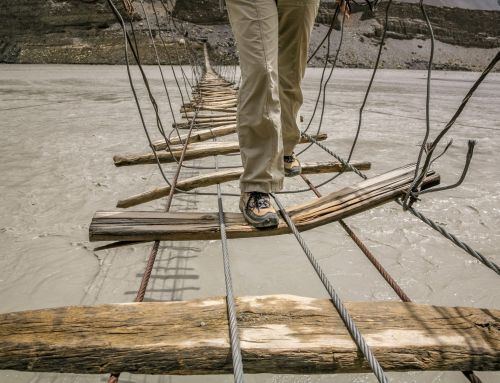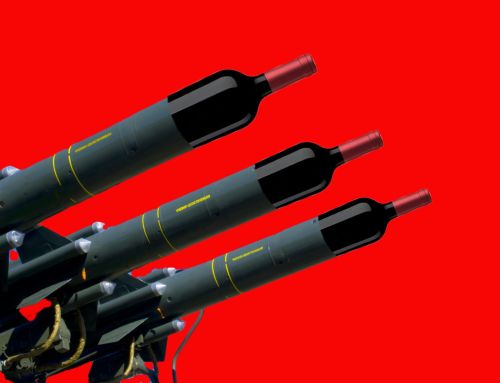This is the second in a three-part series on newly approved appellations in Washington. Read part one on White Bluffs here.
Tomorrow the Alcohol and Tobacco Tax and Trade Bureau (TTB) will officially recognize Goose Gap as a federally approved grape growing region. This comes two weeks after the approvals of White Bluffs and The Burn of Columbia Valley, giving Washington a total of 19 appellations.
“It’s a good mix between the Yakima Valley and Red Mountain,” Juan Muñoz-Oca, chief winemaker at Ste Michelle Wine Estates, says of Goose Gap. “It has the freshness of the Yakima Valley. It has the ability to hold on to acidity yet has a punch of fruit from the heat that they get.”
Goose Gap’s combination of Red Mountain and Yakima Valley profiles is not by accident. Goose Hill, a 1,339-foot prominence within the appellation, lies approximately three miles almost due south of the summit of Red Mountain. That sub-appellation of Yakima Valley also defines Goose Gap’s northern boundary. The Candy Mountain appellation forms part of the northeast border.
As a growing region, Goose Gap has two key distinguishing features. The first is the orientation of the crest of Goose Hill. Like many other Columbia Valley appellations, Goose Hill is a Yakima Fold Belt structure, a series of wrinkles in the landscape. Other prominences in this area, such as Red Mountain, Candy Mountain, and Badger Mountain, have crests that lie northwest to southeast. In contrast, Goose Hill’s crest lies east-west.
Red Mountain and Candy Mountain have more gentle slopes on their south-southwestern sides. For this reason, as well as these slope’s angle to the sun, most vineyard plantings are on these aspects. In contrast, due to its different orientation, Goose Hill has a gentle north-facing slope and a steeper south-facing side. The majority of Goose Gap’s vines are therefore planted on north-northeast facing slopes. This differences in aspect decreases the solar radiation the grapes receive during the growing season.
“Goose, the way that it sits, it’s so different from all of the other mountains around it,” says Sydney Anderson, viticulturalist at Goose Ridge Estate Vineyard and Winery, which lies within the appellation. She notes that the Yakima River, which flows to the west and north of Goose Gap, also influences the weather in the appellation.
“We get this dividing of clouds and fog and weather that’s almost like a rain shadow effect. We’ll be in the fog and you drive to Benton City, and all of a sudden it just clears up or vice versa.” This difference in orientation and weather lead to grapes in Goose Gap ripening as much as a week or more later than nearby sites on Red Mountain and Candy Mountain.
“We will be watching our neighbors harvest different varieties that we won’t start harvesting for a while,” Anderson says. Though like Red Mountain and Candy Mountain, Goose Gap is a warm growing region – averaging approximately 3350 Growing Degree Days – this difference in aspect gives it a unique combination of traditional Yakima Valley and Red Mountain profiles.
“The wines that we’ve made from Goose in the past have a common thread, and you can identify those as you’re tasting them,” says Muñoz-Oca.
The appellation’s other key distinguishing feature is its soils. Five soil series – Warden, Shano, Kiona, Hezel, and Prosser – make up almost 95% of the area. However, nearly two-thirds of the soils are Warden series, a greater percentage than the surrounding appellations.
“I remember Wade Wolfe [of Thurston Wolfe Winery] saying a long time ago ‘Cabernet Sauvignon loves the Warden soils,’” says geologist Alan Busacca, whose company Vinitas Consultants was hired to write the appellation petition. “Perhaps it’s the high water holding capacity of the loess cap that helps make it very resilient to drought stress.”
Warden soils have on average 20 inches of loess – windblown silt and sand – overlying stratified slackwater sediment from the Missoula Floods, a series of cataclysmic events that define most of Columbia Valley’s soils. This makes the soils ideal for irrigated viticulture. Together Warden and Shano series soils make up 85% of the area currently planted to vineyards.
Goose Gap is a sub-appellation of Yakima Valley, which itself is wholly contained within the larger Columbia Valley. Both Goose Hill and Goose Gap receive their name from the area being a common flight path for waterfowl. Goose Gap itself is a saddle between Goose Hill to the west and Badger and Candy Mountains to the east.
Elevations range from 577 feet to 1,339 feet above sea level, with the top of Goose Hill above the Missoula Floods, which had a maximum elevation of 1,200 feet. The area receives approximately seven inches of precipitation annually.
Goose Gap is 8,129 total acres in size, with 1,810 acres planted to grapevines across two commercial vineyards. These vineyards are Goose Ridge Estate Vineyard, which contains the vast majority of plantings, and an Aquilini Brands property. Interstate 82 bisects the northern portion of the appellation. Goose Ridge is the sole winery within the appellation’s boundaries, with all of the fruit coming from its estate site. There are also hundreds of acres of tree fruit within Goose Gap.
In addition to Goose Ridge, more than 20 other wineries source fruit from Goose Gap, with other major producers including Ste Michelle Wine Estates, Precept Wine, and House of Smith. Cabernet Sauvignon makes up almost 40% of plantings, followed by Chardonnay (25%), Merlot (14%), and Syrah (14%). However, due to its varied elevations, aspects, and soils, there are 16 grape varieties planted within Goose Gap’s borders.
“There is so much diversity in such a small area,” says Andrew Wilson, winemaker at Goose Ridge. “It makes it an exciting place to make wine.”
Arvid Monson, whose family had already been growing crops in Yakima Valley for decades, established the first plantings at Goose Gap. As is often the case in Washington, the influence of Dr. Walter Clore, the father of Washington wine, can be felt in the appellation.
“Dr. Clore spent many, many, many hours here in the vineyard before it was developed with my dad, going through the sagebrush,” says Molly Monson-Stutesman, co-owner and vice president at Goose Ridge. “He helped lay out the vineyard.” The first vines in Goose Gap were planted in 1998, and Goose Ridge made its first wines the following year.
With the approval of Goose Gap, Yakima Valley now has five sub-appellations: Rattlesnake Hills, Snipes Mountain, Red Mountain, Goose Gap, and Candy Mountain. Altogether, the Columbia Valley has 15 sub-appellations, with major implications for how Washington wine is perceived. There are two other proposed appellations in Washington that have been submitted for approval to the TTB, Rocky Reach and Wanapum Village.
Image of Goose Gap looking at Badger Mountain by Richard Duval.











Leave A Comment